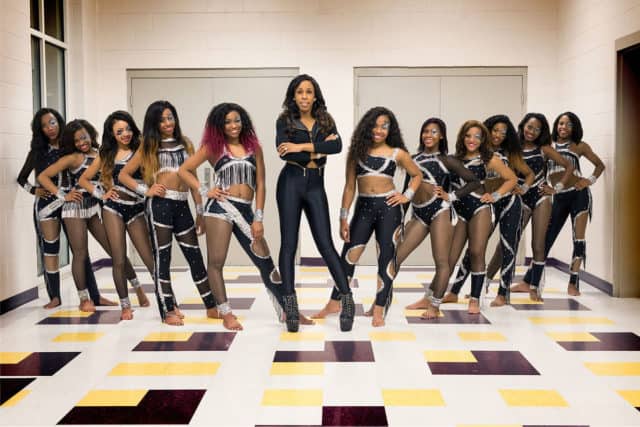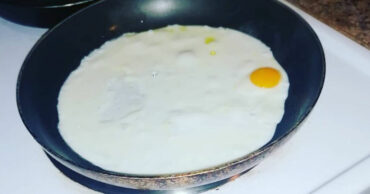
It’s quite common for dance lovers to eagerly watch TV series about dance competitions. Young dancers still training and veteran of hundreds of hours in the dance studio simply cannot get enough. Dancing, once experienced, stays in the blood for life. It’s one reason why dance competition shows such as Bring It! remain popular. There is no shortage of aspiring dancers or those who have aspired to be one. What Bring It! offers, however, is the chance to see a relatively new, and evolving, dance form. For viewers unfamiliar with the South, the dance moves performed on Bring It! are eye-opening in terms of their difficulty and complexity. In certain circles, even dance ones, standard moves, such as “bucking” for example, remain controversial.
Let’s take a look at the show in its historical context, though, to get the whole picture. Thanks to the journalistic work of Azizi Powell, whose blog pancocojams provides fascinating insight about the cultural customs and practices of people of Black descent around the world, it’s possible for fans (and detractors) of Bring It! to make sense of the show and its vibrant dancing.
Powell chronicles how community based dance groups, including those featured on Bring It!, have emulated the performance styles of the dance lines affiliated with the marching bands at historically Black colleges and universities.
Here are a few key examples Powell presents:
- Southern University is home to the Dancing Dolls
- Alcorn State University is home to the Golden Girls
- Jackson State University is home to the Prancing J-Settes
Now consider community dance groups on Bring It!:
- The Dancing Dolls are based in Jackson, Mississippi
- The Prancing Tigerettes are bases in Memphis, Tennessee
Powell informs readers that at one time, historically Black universities did have drum majorettes who performed routines with batons while wearing a uniform. These majorettes were usually part of a group of girls who participated with musical groups such as marching bands or drum and bugle corps. But, this type of majorette group within African American circles are in decline. What is replacing these groups are Hip Hop majorette groups which have incorporated many dance styles under a new definition of majorettes.
In African American culture, the meaning of majorettes has changed, and a completely new vocabulary has developed to describe the dance moves, the dance form, and the dance competition elements. The term “majorette” now refers to a form of dance which is a mixture of hip-hop, ballet, jazz and lyrical dance. That’s the basic definition provided by Coach Diana Williams of the
Dancing Dolls
Bring It! features competitive majorette groups which perform to recorded music with synchronized and choreographed movements. They are new style groups which no longer us batons to twirl or catch as part of their routines. Instead, they “buck” and engage in “stand battles”. Bucking is the move which has opened controversy. It’s a series of rhythmic pelvic thrusts which Powell identifies as a very old dance movement originating from African dances.
Stand battles refers to two competing teams trying to out dance each other with impressive choreographed dance sequences. Two teams face each other and alternate eight dance counts until the judges declare which team wins. Each sequence of eight dance counts is a “stand”. This process is likened to a street fight or war, except that the opposing teams fight with dancing rather than violence. At the collegiate level, the dance lines would perform dance routines, literally in the stands, the seating area where the crowd sits, as entertainment during games.
So, what does Bring It! get wrong about dance competitions?
Well, the form is quite new and still evolving. Information about which organizations are judging, judging criteria, and judging organization history is not included on the shows. The series focuses instead on the dancers. It would be nice to know who and what gives authenticity to the competitions aired.
For example, there is at least one school-based organization which has developed a respected presence in the dance competition world. The first National Street Dance USA hip hop dance competition was founded in 1991, and is a well-respected competition drawing school dance groups from around the world. The organization has been welcoming school-based majorette stand battle squads as the first and only national dance competition to do so. Part of Miss Dance Drill Team USA, the competition features rules and regulations and promised growth in new cities in recent years.
Miss D. founded the Dancing Dolls troupe in 2001. Her dance studio in Jackson, Mississippi, the Dollhouse Dance Factory opened in 2010. The show first aired in 2014. There have been plenty of dance competitions cropping up since Bring It! brought the majorette style to the public. Websites publicize their various events, and list the styles and rules for each event. It’s all kind of grass roots, and sometimes…when viewers are looking very closely… the competitions seem small and organized for the sake of the show.
There’s nothing wrong with that, as promotion is what will enable the growth of this emerging dance genre. The accomplishments of all involved are to be commended. Yet, it would be awesome to see the development of an organization which would definitively structure majorette competitions, not only for the regional community events, but on a national and international level. Until then…Bring It!
 Follow Us
Follow Us






Insightful and I agree! We need more organizations to bridge the gap between the Bring It style and Dance Moms style. Heck! All those girls should have the opportunities Abby Lee has generated for her girls! Waiting for the competitions to be more standard and impartial too. Love how that Houston team (D3 Elite Dance) does it! Where can we get more info on the national street dance event?